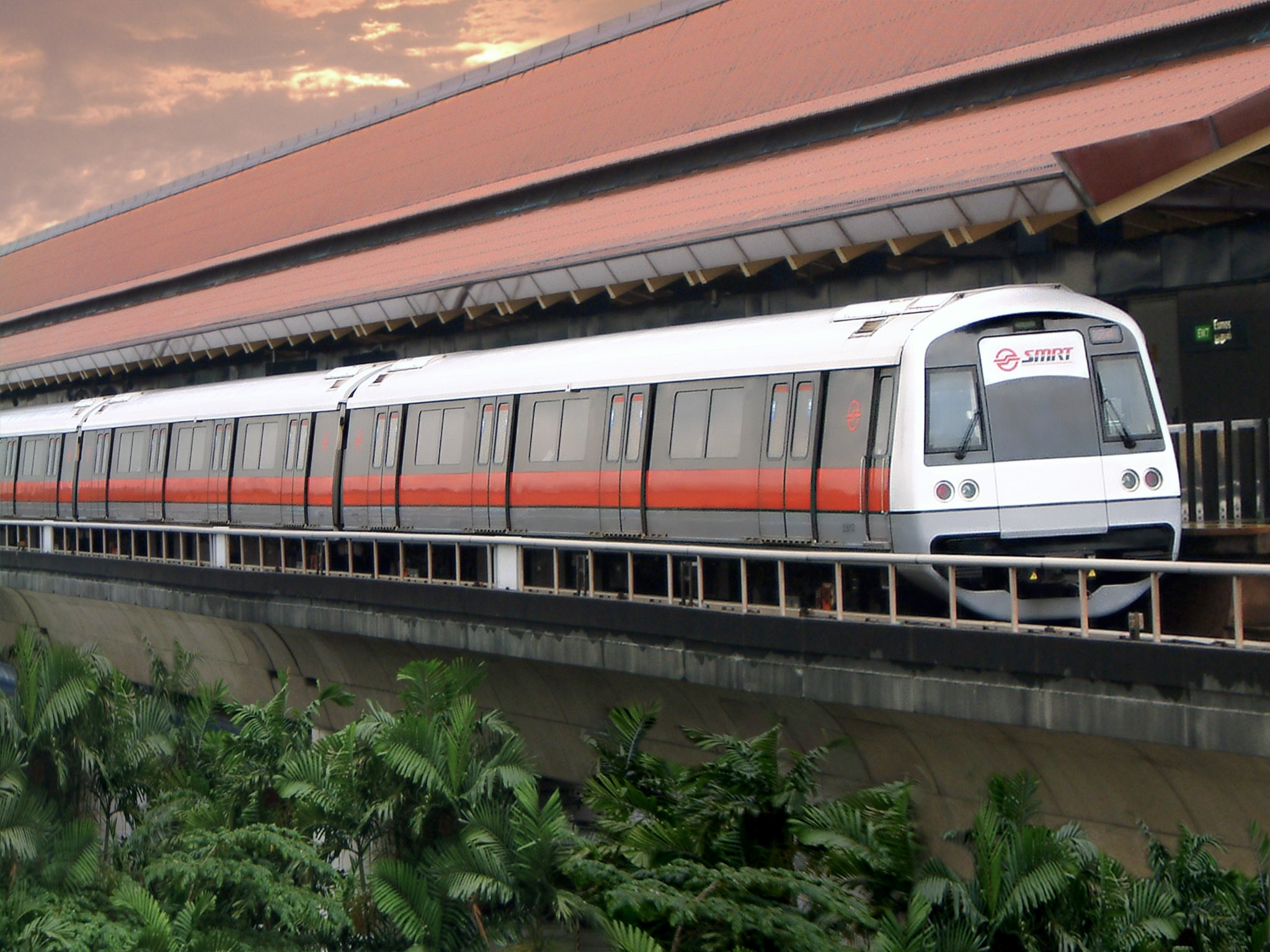 Looks nice from the outside, but inside, the only things you'll see are your fellow sardines' hair and the train roof - and perhaps, on the newer trains, a non-functional LCD display (photo:wiki).
Looks nice from the outside, but inside, the only things you'll see are your fellow sardines' hair and the train roof - and perhaps, on the newer trains, a non-functional LCD display (photo:wiki). In an obvious attempt to brainwash its (pitiful) people (not that the hard threats of death or being left out when it comes to doling out rations don't work), North Korea's repressive dictatorship names Pyongyang Metro stations after themes of its socialist revolution (e.g. Victory, Unity), and blasts chants of slogans and nationalistic songs through their rail network's Propaganda Assistance (PA) system. Well, that's if and only their metro isn't temporarily shut down due to an electricity shortage (the making of fuel embargos) - but that aside.
Now let's look at Singapore's MRT system. The striking similarities are uncanny. I'm not only talking about those irritating "Going to Chinatown or Little India? take the SMRT link bus service..." [instead of the NEL] advertisements that SMRT blasts through its PA, but rather, the transport conglomerates' whole toolbox of blatent and sometimes cunning or underhand PR campaigns.
This affects you and me
Take, for one, the Public Transport Council. Really, people shouldn't squabble over fare increases of a few cents - or so they say. But it adds up to marvellous profits for the transport conglomerates. Maybe enough to buy peanuts - at the expense of the poor $600-a-month odd-job workers or toilet cleaners, who don't really have a transport alternative. The PTC, in my opinion, is a joke of a government-sponsored PR campaign that lends the fare increases some facade of legitimacy.
Next, look at SMRT's denial of rush-hour crushloading. Yes, it may be below the manufacturer's stated limits, but the limits are actually an approximation of the maximum permissible load, not the maximum no. of passengers (since anyway, people differ in volume around the globe). Anyone who takes the MRT during rush hour can testify how packed it is - I usually count about 7 passengers per square meter of standing room - that works out to be 230% of a defined normal load (by convention, a normal load is 3 passengers per square meter). It doesn't take a train to be as crowded as Japan's notorious subway to be called "crowded" - and just as the crime rate of other countries being high is no reason for ours to be similarly high, the fact that the subways of other countries is crowded (as SMRT loves to repeat) is no excuse for ours to exhibit the same problem.
Even worse is SMRT's most recent PR effort: "Cram Jam", in which SMRT attempts to set a world record for squeezing as many people as possible into 1 train carriage or 1 bus (and force volunteers who sign up to get squished to make a $15 donation towards some charity thing- and let's not talk about how forcing people to donate is against the principles of charity). Wouldn't these figures (of how many people can fit into a train or bus) just seem too convenient to justify (or imply) how trains or buses can fit so many more people and hence aren't crowded? They haven't done it (yet), and I hope they won't ... but i doubt they would be able to resist.
The way forward
The government should have some form of check and balance (with much more teeth than the PTC) promoting commuter's welfare, and protecting your poor noodle-stall or shopping-mall-toilet auntie from the profit motivated (and hence selfish) interest of these transport conglomerates.
Better still, since transport is such an essential public service and many people just don't have other alternatives, break the transport duopoly, and return this essential public service to the people. Make it a government-managed, not-for-profit public service / "charity" - minus the golden taps please, but i'll welcome free peanuts, of a very different kind, to munch on board.
